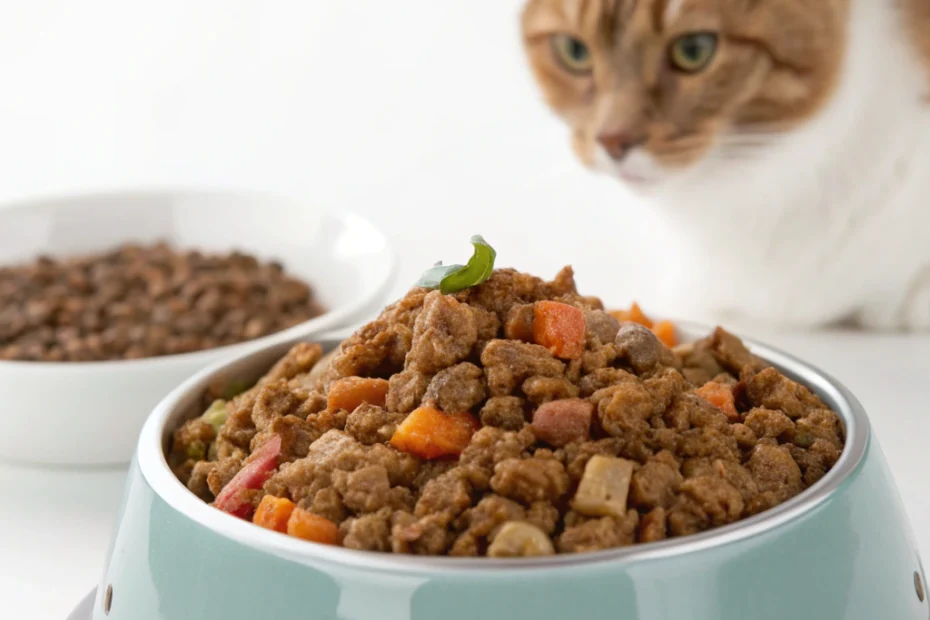At-a-Glance
Managing diabetes in cats can be challenging, but choosing the right cat food for diabetic cats may help support their health. This guide provides an overview of what you need to know about feeding a diabetic cat, including how to choose the right food, safety considerations, and more. By understanding these essentials, you can make informed decisions that may improve your cat’s quality of life.
How to Choose
When selecting cat food for diabetic cats, there are several factors to consider. The right food can support your cat’s health by maintaining stable blood sugar levels. Here are some tips to guide your choice:
- Consult Your Veterinarian: Always start by discussing dietary changes with your veterinarian. They can provide personalized recommendations based on your cat’s specific needs.
- Look for Low Carbohydrate Options: Foods that are low in carbohydrates may help manage blood sugar levels. Check the ingredient list for high protein and low carbohydrate content.
- Consider Wet Food: Wet food is often recommended for diabetic cats as it typically contains fewer carbohydrates and more moisture, which can be beneficial for overall health.
- Check for Quality Ingredients: Opt for foods with high-quality proteins and avoid those with fillers or artificial additives.
Safety & Setup
Ensuring the safety of your cat’s diet involves more than just selecting the right food. Here are some safety tips to consider:
- Monitor Portion Sizes: Overfeeding can lead to weight gain, which may exacerbate diabetes symptoms. Follow your veterinarian’s advice on portion sizes.
- Establish a Feeding Routine: Consistent feeding times can help regulate your cat’s blood sugar levels. Try to feed your cat at the same times each day.
- Watch for Adverse Reactions: When introducing new food, monitor your cat for any signs of digestive upset or allergic reactions. Contact your veterinarian if you notice any concerning symptoms.
Core Pillars
The core pillars of managing diabetes in cats with diet include maintaining stable blood sugar levels, ensuring proper nutrition, and monitoring your cat’s overall health. Here’s how these pillars can support your cat:
- Stable Blood Sugar Levels: A diet low in carbohydrates and high in protein may help keep blood sugar levels stable, reducing the risk of spikes and crashes.
- Proper Nutrition: Ensuring your cat receives all necessary nutrients is crucial. A balanced diet supports overall health and can aid in managing diabetes.
- Regular Monitoring: Keep track of your cat’s weight, behavior, and blood sugar levels. Regular veterinary check-ups are essential to adjust dietary needs as required.
Placement & Environment Tips
The environment in which your cat eats can also impact their health. Consider these tips to create a supportive feeding environment:
- Quiet Feeding Area: Choose a calm, quiet area for feeding to reduce stress and encourage your cat to eat at a relaxed pace.
- Separate Feeding Stations: If you have multiple pets, consider separate feeding stations to prevent competition and ensure your diabetic cat eats their designated food.
- Accessible Water: Always provide fresh water near the feeding area to encourage hydration, which is particularly important for diabetic cats.
Comparison with Alternatives
There are various dietary approaches to managing diabetes in cats. Here’s a comparison of common options:
- Prescription Diets: These are specially formulated by veterinarians to meet the needs of diabetic cats. They may offer precise nutrient profiles but can be more expensive.
- Commercial Low-Carb Diets: These are available over-the-counter and may provide a more affordable option. Ensure they meet the nutritional needs of your cat.
- Homemade Diets: Some owners opt for homemade diets to control ingredients. However, these require careful planning and veterinary guidance to ensure nutritional balance.
FAQs
Here are some frequently asked questions about feeding diabetic cats:
Can I feed my diabetic cat treats?
Treats should be given sparingly and should be low in carbohydrates. Consult your veterinarian for suitable options.
How often should I feed my diabetic cat?
Feeding schedules can vary, but many diabetic cats benefit from multiple small meals throughout the day. Follow your veterinarian’s advice on feeding frequency.
Is dry food suitable for diabetic cats?
Dry food is generally higher in carbohydrates, which may not be ideal for diabetic cats. Wet food is often recommended, but consult your veterinarian for guidance.
What to Do Next
Now that you have a better understanding of cat food for diabetic cats, consider discussing your options with your veterinarian. They can help tailor a diet plan that suits your cat’s specific needs. Remember, managing diabetes is a team effort between you and your vet, and the right diet is a crucial component of that management.
Disclaimer: Always consult your veterinarian for personalized advice regarding your cat’s health.
